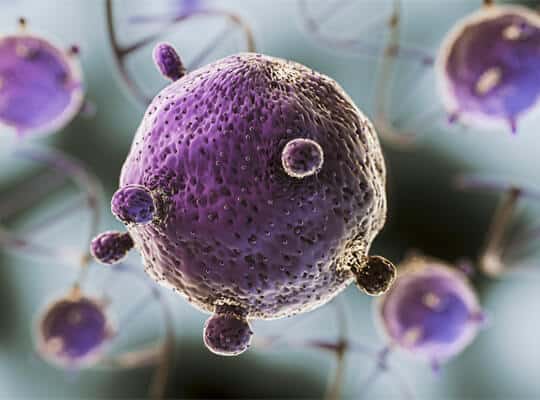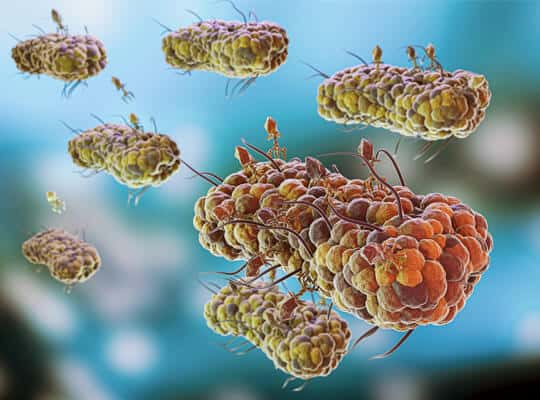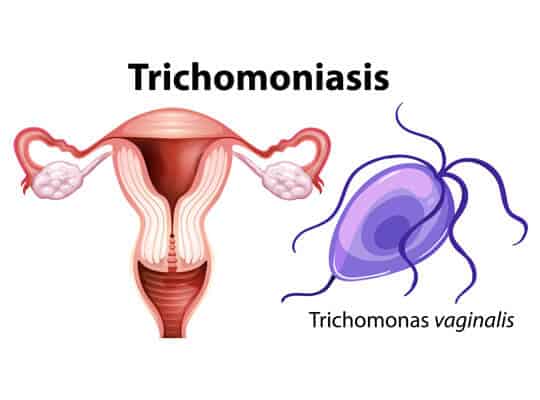Trichomonas Vaginalis
Table of Contents
Trichomonas Vaginalis
Trichomoniasis is a common sexually transmitted infection (STI). It is caused by an organism called Trichomonas vaginalis, which lives in the vagina and urethra. The symptoms of trichomoniasis in women tend to be mild or absent. If you have trichomoniasis, you should tell your sex partner(s) so they can be tested and treated too.
The most reliable way to diagnose trichomoniasis is by examining a sample of vaginal discharge under a microscope. Other tests that may be used include culture of the organism from vaginal secretions, PCR assay and antigen detection assay using monoclonal antibodies.
Trichomoniasis is a common sexually transmitted infection (STI)
Trichomoniasis is a common sexually transmitted infection (STI). It’s usually caused by an organism called Trichomonas vaginalis, but it can also be caused by other types of trichomonads.
Trichomoniasis is spread when someone who has the infection passes it on to his or her partner during sex. You can get trichomoniasis from having unprotected vaginal, anal, or oral sex with someone who has the disease–even if he or she doesn’t have symptoms. The parasite that causes trichomoniasis can live in your body for up to 28 days before you have any symptoms or signs of infection!
It is usually caused by an organism called Trichomonas vaginalis
Trichomonas vaginalis is a parasite that causes trichomoniasis. It is usually caused by an organism called Trichomonas vaginalis. The infection can be transmitted during sexual contact, especially when there are open sores or abrasions on the penis or vulva (the external female genitalia).
The symptoms of trichomoniasis include itching or irritation in the vagina and discharge from it that’s frothy, yellowish or greenish-gray. If you have these symptoms, see your doctor immediately so he or she can test you for this condition!

It affects about 6 million people in the United States each year
Trichomoniasis is the most common curable STI. About 6 million people in the United States get it each year, but many don’t know they have it because it can be asymptomatic. It’s usually caused by an organism called Trichomonas vaginalis and transmitted through sexual contact with an infected partner.
Trichomoniasis symptoms can include itching or burning during urination, painful or difficult urination, discharge from the penis or vagina (usually frothy), soreness in your lower abdomen (stomach area), pain during sex and/or bleeding after sex if you have open sores on your genitals or anus that allow bacteria to enter your bloodstream through these cuts.

The symptoms of trichomoniasis in women tend to be mild or absent
The symptoms of trichomoniasis in women tend to be mild or absent. If you experience any of the following symptoms, it is important that you see your doctor:
- Irritation around your vagina
- Burning or itching during urination
- Painful urination (dysuria)
- Discharge from the vagina (vaginal discharge) that may be thin and watery or thick and curdy (like cottage cheese), yellowish or grayish white in color with an unpleasant odor
Trichomoniasis Discharge
One of the most characteristic symptoms of trichomoniasis in women is an abnormal vaginal discharge. This discharge can vary in appearance, often being described as frothy, yellowish, greenish-gray, or even having a foul odor. For individuals experiencing trichomoniasis discharge, seeking timely medical attention is crucial to prevent further complications and to curtail the spread of the infection.
Trichomoniasis discharge is a result of the overgrowth and activity of Trichomonas vaginalis in the vaginal canal. The parasite thrives in the warm and moist environment of the female genital tract, leading to inflammation and irritation of the vaginal walls.
As a response to the infection, the body produces an excessive amount of vaginal discharge, which serves as a mechanism to flush out the invading pathogens. This discharge may not always be immediately noticeable, as trichomoniasis can often be asymptomatic, leading some individuals to remain unaware of their infection status.
The presence of trichomoniasis discharge should never be overlooked or dismissed, as it may be accompanied by other uncomfortable symptoms. Women infected with trichomoniasis may experience itching and burning sensations in the genital area, particularly during urination. The discomfort can extend to the lower abdomen, leading to pain during sexual intercourse and an overall diminished quality of life.
Confirm the presence of trichomoniasis discharge, healthcare providers conduct a thorough examination. They may collect a sample of the vaginal discharge and examine it under a microscope, searching for the characteristic motile parasites of Trichomonas vaginalis. Additionally, advanced techniques like PCR assays and antigen detection may be employed for more accurate diagnoses, ensuring prompt and appropriate treatment.

Fortunately, trichomoniasis discharge can be effectively treated with antimicrobial medications, with metronidazole and tinidazole being the most commonly prescribed drugs. It is crucial to complete the entire course of treatment as prescribed by the healthcare provider to ensure the complete eradication of the infection.
Moreover, individuals diagnosed with trichomoniasis should inform their sexual partners about the infection, prompting them to seek medical evaluation and treatment as well, in order to prevent reinfection and further transmission within sexual networks.
In conclusion, trichomoniasis discharge is a notable symptom of the sexually transmitted infection caused by Trichomonas vaginalis. It is essential for sexually active individuals, especially women, to be vigilant about any unusual vaginal discharge and seek medical attention promptly if they suspect a trichomoniasis infection.
If you have trichomoniasis, you should tell your sex partner(s) so they can be tested and treated too
If you have trichomoniasis, it is important to tell your sex partner(s) so they can be tested and treated too. Trichomoniasis can be easily passed from one person to another during sexual activity. The most common way of getting trichomoniasis is by having vaginal, anal or oral sex with someone who has the infection.
It’s also possible for women who are pregnant or breastfeeding their babies to pass on the infection to their unborn child during pregnancy (before birth).
Trichomonas on Men

Trichomonas on men can lead to various symptoms and complications that require proper diagnosis and treatment.
Trichomonas on men can be asymptomatic, posing a challenge in identifying the infection. As a result, many infected individuals may remain unaware of their infection status, inadvertently continuing to spread the parasite to their sexual partners. When symptoms do occur, they typically manifest within 5 to 28 days after exposure to the parasite.
The most common symptom experienced by men with trichomoniasis is urethritis, which is the inflammation of the urethra. This inflammation can lead to discomfort or pain during urination, along with a burning sensation. Additionally, men may notice an unusual discharge from the penis, which can vary in color and consistency. This trichomonas on men can be a distressing and uncomfortable experience.
It is crucial for men experiencing these symptoms to seek medical attention promptly. Healthcare providers can conduct a thorough examination and collect samples for testing to confirm the presence of Trichomonas on men. Similar to women, diagnosing trichomoniasis on men may involve examining a sample of the penile discharge under a microscope or using advanced techniques like PCR assays for accurate detection.
Once diagnosed trichomoniasis on men, the treatment approach is similar to that used for women. Healthcare providers typically prescribe antibiotics such as metronidazole or tinidazole to combat the infection. Completing the full course of antibiotics is essential to ensure the complete eradication of the parasite and prevent the recurrence of the infection.
In addition to receiving treatment, men with trichomoniasis should inform their sexual partners about the infection. By doing so, they can encourage their partners to seek medical evaluation and treatment, preventing the cycle of transmission and reinfection. Moreover, practicing safe sex during and after treatment is crucial to protect both the individual and their sexual partners from the spread of the infection.
It is worth noting that complications can arise if trichomoniasis is left untreated on men. Untreated infections can lead to chronic inflammation of the urethra and other genital structures, potentially causing long-term discomfort and fertility issues. Furthermore, trichomoniasis may increase the risk of contracting other sexually transmitted infections, including HIV.
Prevention is a key aspect of managing trichomoniasis on men. Using condoms consistently and correctly during sexual activity can significantly reduce the risk of acquiring or transmitting the infection. Regular STI screenings for sexually active individuals, especially those with multiple sexual partners, are also crucial in identifying and addressing trichomoniasis and other STIs at an early stage.
In conclusion, trichomonas on men is a significant aspect of the overall impact of trichomoniasis as a sexually transmitted infection. While men may experience asymptomatic infections, urethritis and penile discharge are common symptoms that warrant medical attention. Prompt diagnosis and appropriate treatment with antibiotics are essential to resolve the infection and prevent complications.
Encouraging open communication with sexual partners and practicing safe sex play pivotal roles in curbing the spread of trichomoniasis and maintaining sexual health for both men and women.
The most reliable way to diagnose trichomoniasis is by examining a sample of vaginal discharge under a microscope
The most reliable way to diagnose trichomoniasis is by examining a sample of vaginal discharge under a microscope. The microscopic examination can be done either in the office or, if you have severe symptoms or your doctor suspects that you may have been exposed to other STDs, at an external laboratory that specializes in STDs.
If you are pregnant and your doctor suspects that you might have trichomoniasis, he or she will probably send off samples of your vaginal secretions for culture and/or PCR assay (polymerase chain reaction). This technique makes many copies of specific DNA sequences so they can be detected more easily than with standard cultures.
In addition to this test being very accurate when done by an experienced lab technician who knows what he or she is doing; it also has the advantage over microscopy because it doesn’t require special equipment like microscopes do–which means less time spent waiting around after taking samples from your vagina (and thus less chance for contamination from other sources).

Other tests that may be used include culture of the organism from vaginal secretions, PCR assay and antigen detection assay using monoclonal antibodies
- Culture of the organism from vaginal secretions
- PCR assay (Polymerase Chain Reaction)
- Antigen detection assay using monoclonal antibodies
Treatment for Trichomoniasis
When it comes to finding the right treatment for trichomoniasis, healthcare providers typically rely on antimicrobial medications to combat the infection successfully.
The most commonly prescribed medications for the treatment of trichomoniasis are metronidazole and tinidazole. These antibiotics are highly effective in eradicating the Trichomonas parasite and alleviating the associated symptoms. Metronidazole, in particular, is considered the first-line treatment and has been used for decades with proven efficacy.
Treatment for trichomoniasis usually involves a single oral dose of metronidazole or tinidazole, making it a convenient and manageable option for patients. However, in some cases, healthcare providers may prescribe a longer course of treatment, especially if the infection is severe or recurrent.
It is essential for patients to follow their healthcare provider’s instructions regarding the dosage and duration of treatment. Completing the full course of antibiotics is crucial to ensure that the infection is entirely cleared from the body. Failure to complete the prescribed treatment may result in incomplete eradication of the parasite, leading to a resurgence of the infection.
In addition to the primary oral medications, healthcare providers may sometimes recommend topical treatments to manage trichomoniasis. Clindamycin cream or gel may be prescribed in combination with metronidazole to address symptoms like itching and inflammation in the vaginal area effectively.
As with any medical condition, it is essential to inform healthcare providers about any known allergies or adverse reactions to medications. Additionally, patients should avoid alcohol consumption while undergoing treatment with metronidazole or tinidazole, as it can lead to unpleasant side effects.

While the prescribed medications effectively target the Trichomonas parasite, it is equally important for patients to practice safe sex during and after treatment. Abstaining from sexual activity during the course of treatment can help prevent reinfection and transmission to sexual partners. If sexual partners are diagnosed with trichomoniasis, they should also seek treatment to avoid ping-pong infections.
After completing the treatment, patients should attend follow-up appointments as advised by their healthcare providers. Follow-up visits allow providers to assess the effectiveness of the treatment and ensure that the infection has been fully resolved.
In conclusion, the treatment for trichomoniasis involves the use of antimicrobial medications, with metronidazole and tinidazole being the primary options. Compliance with the prescribed treatment plan is vital to achieve a successful outcome and prevent reinfection. Additionally, practicing safe sex and informing sexual partners about the infection are essential steps in managing trichomoniasis and promoting overall sexual health. Seeking timely medical attention and adhering to healthcare providers’ recommendations are key factors in combating this common STI effectively.
For More Information
Please do not hesitate to contact us for more information on the subject.



